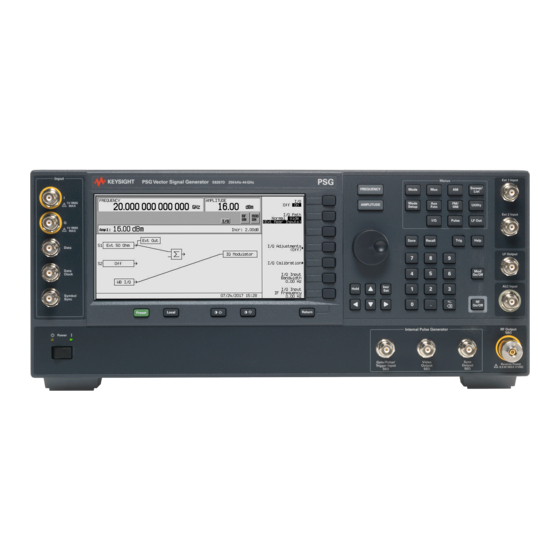
Table of Contents
Advertisement
Quick Links
Keysight
Signal Generators
E4428C/38C ESG RF
E8663B/E8663D PSG RF Analog
N5161A/62A/81A/82A MXG RF
E8257D/67D PSG Microwave
N5183A MXG Microwave
Notice: This document contains references to
Agilent. Please note that Agilent's Test and
Measurement business has become Keysight
Technologies. For more information, go to
www.keysight.com.
Programming
Guide
Advertisement
Table of Contents
Troubleshooting














Need help?
Do you have a question about the E4428C ESG RF and is the answer not in the manual?
Questions and answers